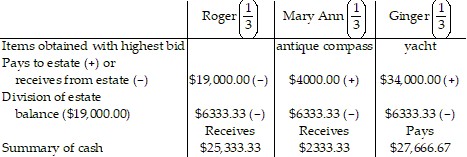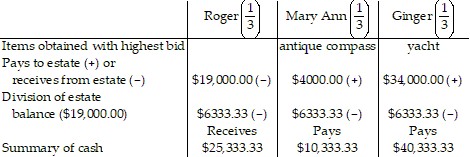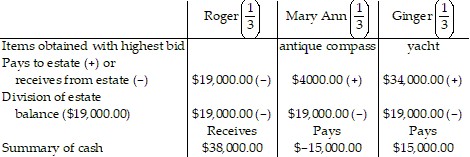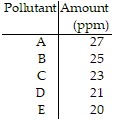Find all local extreme values of the given function and identify each as a local maximum, local minimum, or saddle point.
A. (0, 0); saddle point; (10, 10); local maximum
B. (10, 0); local minimum; (0, 10); local minimum
C. (0, 0); saddle point
D. (10, 10); local maximum
Answer: C
You might also like to view...
Find the length of the curve.y = ln(sec x) from x = 0 to x = ?/4
A. ln(1 -  )
)
B. ln( + 1)
+ 1)
C. ln
D. ln
Use the method of sealed bids to complete the table.Use the first table to complete the fair division accounting of the estate cash in the empty table.

A. 
B. 
C. 
D. 
Solve the problem.The spread of a cold virus can be modeled using logistic equations. The key assumption is that at any given time, a fraction y of the population, where 0 ? y ? 1, has the virus, while the remaining fraction src="https://sciemce.com/media/4/ppg__tttt0613190828__f1q15g3.jpg" alt="" style="vertical-align: -4.0px;" /> and solve the initial value problem where the number of people who initially have the cold virus is  does not. Furthermore, the cold virus spreads by interactions between those who have it and those who do not. The number of such interactions is proportional to y(1 - y). Therefore, the equation that describes the spread of the virus is
does not. Furthermore, the cold virus spreads by interactions between those who have it and those who do not. The number of such interactions is proportional to y(1 - y). Therefore, the equation that describes the spread of the virus is  where k is a positive real number. Assume
where k is a positive real number. Assume 
A. y = 
B. y = 
C. y = 
D. y = 
Use the information in the table to solve the problem. Write your answer as a fraction in lowest terms.The table below shows the amounts of pollutants (in parts per million) in a sample of rainwater. Find the ratio of pollutant B to pollutant C.
Find the ratio of pollutant B to pollutant C.
A. 
B. 
C. 
D. 